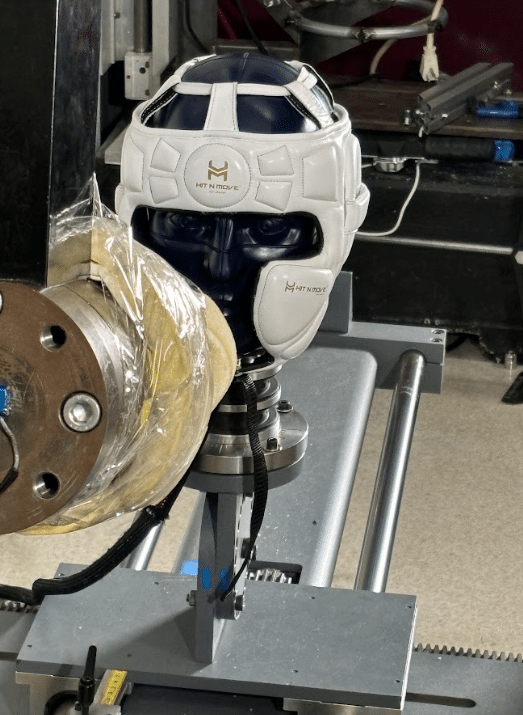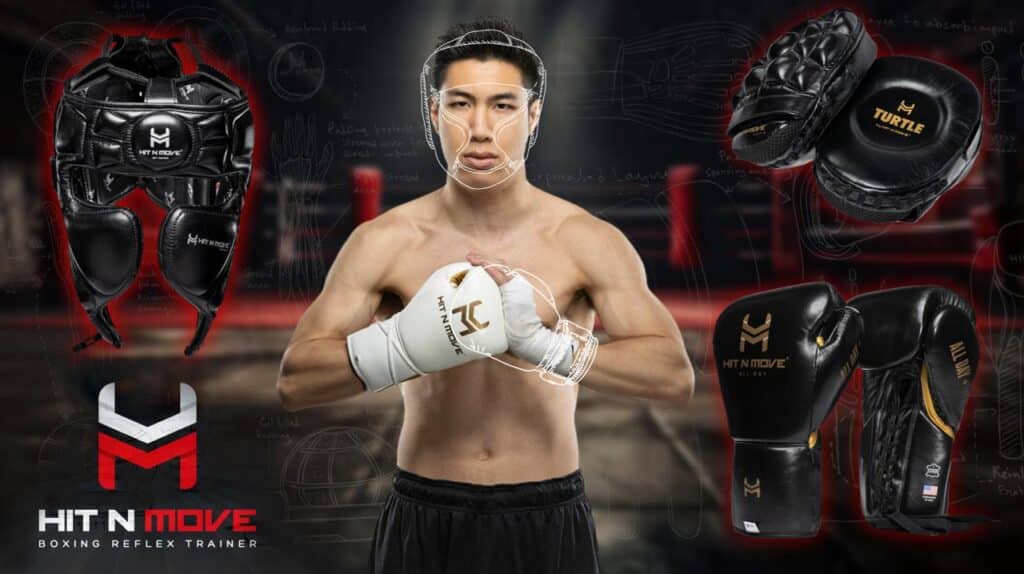By: Joah Faiello
In boxing, the gear athletes use isn’t just equipment; it’s a critical element that can make a significant difference in performance, safety, and comfort. Whether it’s gloves, headgear, or resistance bands, ensuring the quality and effectiveness of boxing gear requires rigorous testing. But what does this testing entail, and why is it essential to conduct it both in a laboratory and in the ring? This article delves into the differences between these testing environments and discusses why both are crucial for developing quality boxing gear.
Lab Testing: Precision and Control
Imagine a pristine lab filled with advanced machinery and precise instruments. This is where lab testing happens. In this controlled environment, experts can measure a glove’s exact force absorption, headgear’s durability, or bands’ resistance levels with pinpoint accuracy. Here are some critical advantages of lab testing:
- Controlled Environment: Labs provide a setting where variables such as temperature and humidity are kept constant. This ensures that the tests are repeatable and the results are reliable.
- Precision: High-tech equipment can capture detailed data on how materials respond to stress, impact, and wear. For instance, a glove can be subjected to repeated high-impact simulations to assess its cushioning efficiency and longevity.
- Safety: Potentially dangerous scenarios, like testing the impact resistance of headgear, can be simulated with mechanical models, minimizing risk to human subjects.
Despite these advantages, lab testing has its limitations. The controlled conditions can’t fully replicate a real boxing match’s chaotic and dynamic nature. This is where the importance of ring testing comes in.
Ring Testing: Real-world Performance
In contrast to the sterile conditions of a lab, the boxing ring is a dynamic and unpredictable environment. Testing gear in the ring means subjecting it to the same conditions a boxer would face during training or a match. Here’s why ring testing is indispensable:
- Real-world Conditions: Gear is tested in the ring under actual fight conditions, where sweat, movement, and varied impact angles come into play. This showcases how the gear performs in real scenarios.
- Human Feedback: Boxers using the gear can provide invaluable feedback on comfort, fit, and usability. For example, a glove might perform well in lab tests but cause discomfort during a match, something only a boxer could report.
- Dynamic Testing: The ring introduces unpredictable forces and movements that are difficult to simulate in a lab. Gear is subjected to a range of impacts and stresses, offering a comprehensive assessment of its performance.
However, the variability of real-world conditions and the inherent risks to athletes make achieving consistent, repeatable results in the ring challenging.
Development and Testing: A Rigorous Process
To truly ensure that boxing gear is of high quality, combining both lab and ring testing is essential. Ozhan Akcakaya, the founder of Hit N Move, exemplifies this approach in developing his innovative headgear.

Iterative Design Process
The journey to finalize the headgear involved numerous design iterations, with over 20 failed attempts before achieving the desired model. Hit N Move partnered with Virginia Tech to validate its efficacy for scientific testing. Together, they established a standardized testing protocol for boxing headgear. The tests involved a 16oz weight on a pendulum swung at three different energy levels, measuring the impact with and without headgear. They tested the Japanese, Mexican, and USA Boxing headgear and multiple versions of Precision headgear for the results. Each energy level with the pendulum was tested on the chin, temple, cheeks, and back of the head three times on each part for all three energy levels on every headgear tested.
Significant Findings from Virginia Tech’s Study
The research confirmed that wearing headgear significantly reduces the risk of concussions compared to not wearing any, emphasizing the importance of headgear in sparring sessions. This evidence is crucial for boxers and reinforces the need for protective equipment.
Despite being 5 ounces lighter and much slimmer than some of the leading models in the market, Hit N Move’s headgear performed comparably in all tested categories. This result is a promising indication of the future of protective boxing equipment.
Virginia Tech approved the use of the word “comparable” to be scientifically accurate. It indicates that while Hit N Move headgear might offer better protection, the difference between it and the competition is so small that the benefits are minimal. The real beauty lies in achieving comparable results while being smaller, lighter, and sleeker.

Community Feedback and Further Testing
In addition to Virginia Tech’s scientific validation, the headgear underwent blind testing in multiple gyms, including Upton Boxing Baltimore, overseen by Head Coach Calvin Ford, who trains world champion Gervonta ‘Tank’ Davis. Other participating gyms included STB Boxing Gym in Lorton, VA, Telford Boxing Academy in the UK, and Kaizen MMA in Fairfax, VA.
Boxers tested various headgear models without knowing which brand they were using. After three rounds, they provided feedback on vision, protection, and movement. The responses were overwhelmingly positive, with fighters expressing amazement at the new headgear, noting it felt like wearing no headgear at all while still offering excellent protection.
Final Remarks
The collaboration between Virginia Tech University and Hit N Move has contributed to advancing boxing headgear. The ultra-slim and lightweight design of Hit N Move’s headgear not only enhances safety but also improves boxers’ performance, marking a significant step forward in protective boxing equipment innovation. This breakthrough underscores the importance of continuous research and development in ensuring athlete safety in contact sports.
By leveraging the strengths of both lab and ring testing, manufacturers like Hit N Move can create boxing gear that truly excels in safety, performance, and athlete satisfaction. So, next time you watch a boxing match or lace up a pair of gloves, remember the rigorous journey that gear has undergone. Thanks to the meticulous blend of science and real-world testing, it’s not just about surviving punches; it’s about thriving in the ring.
Published By: Aize Perez







